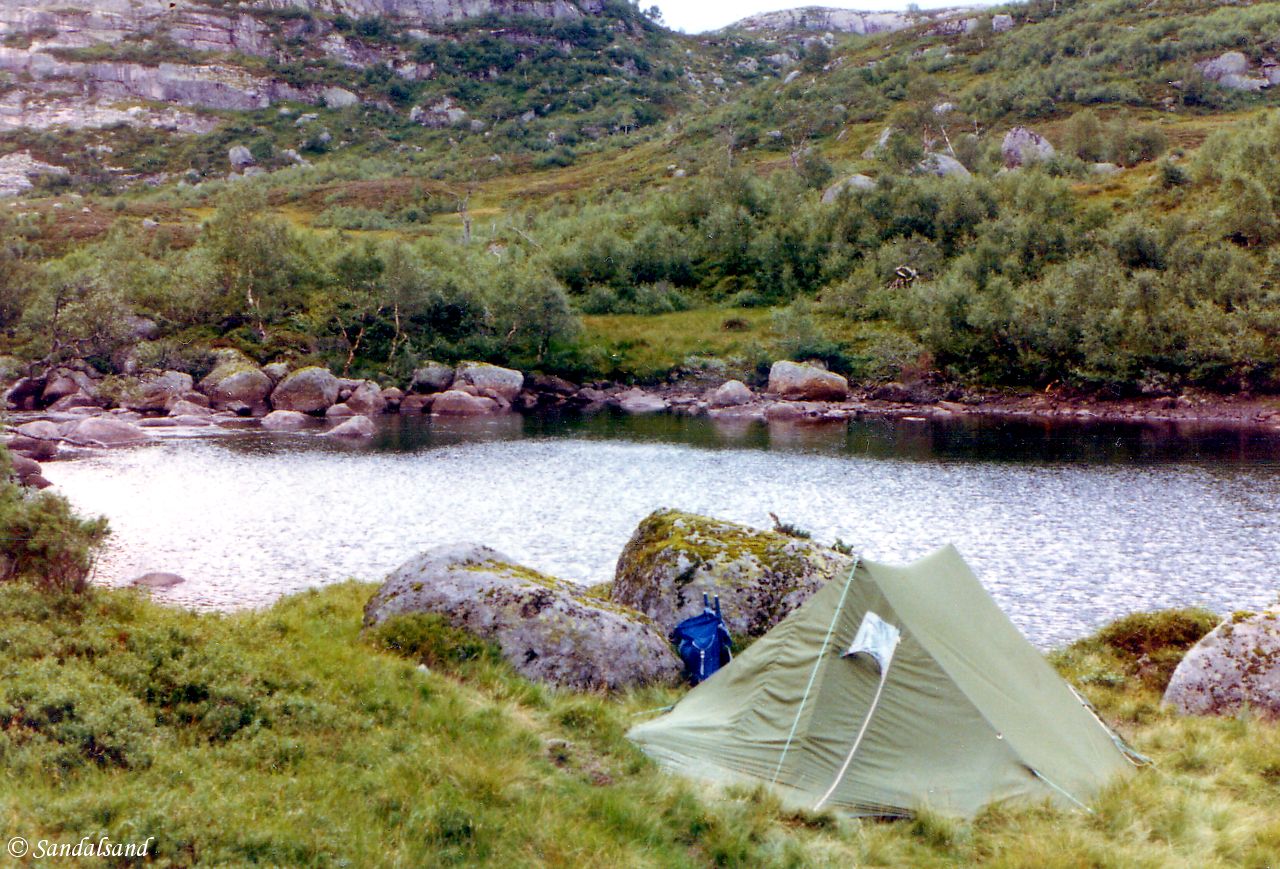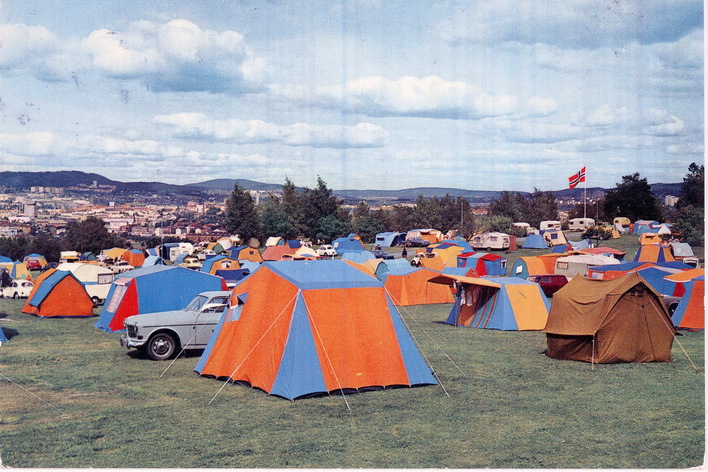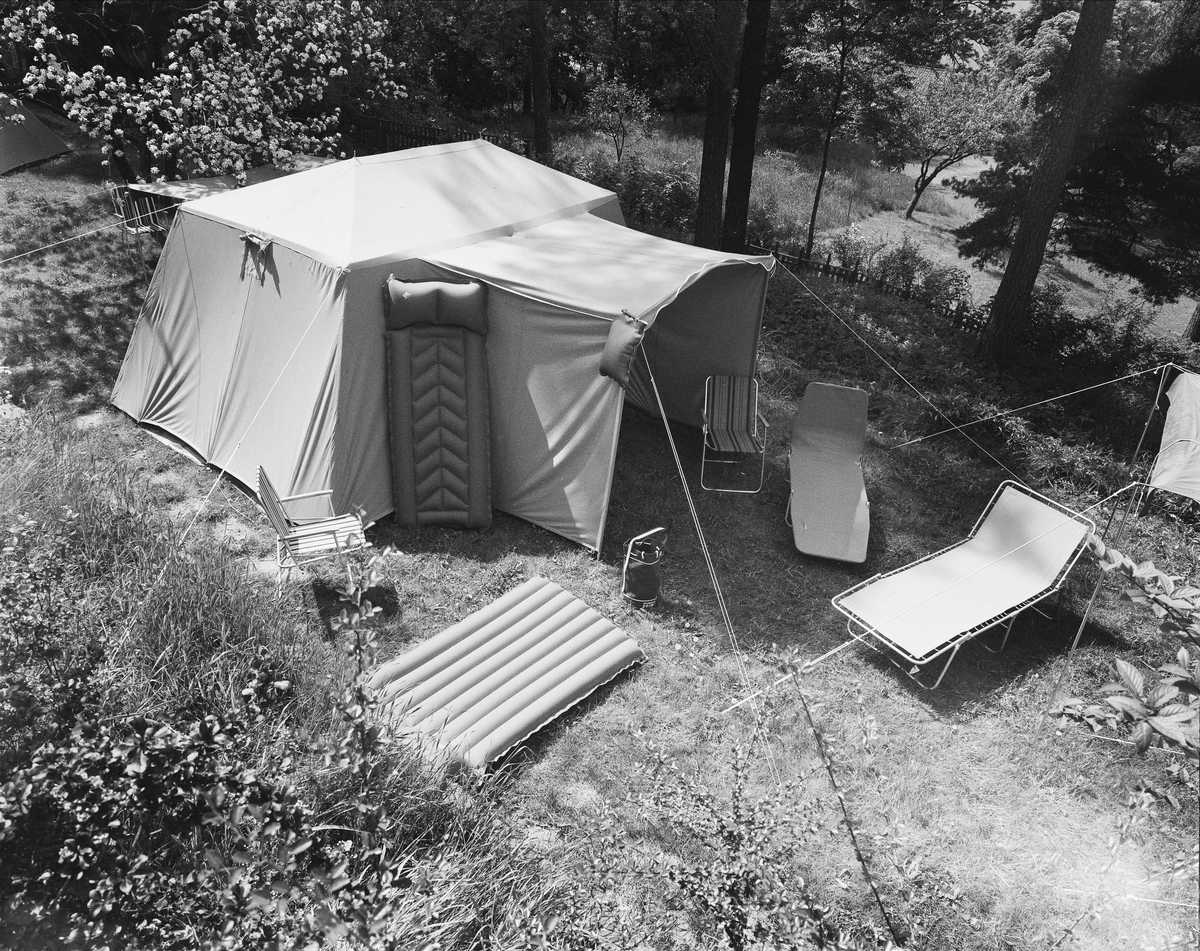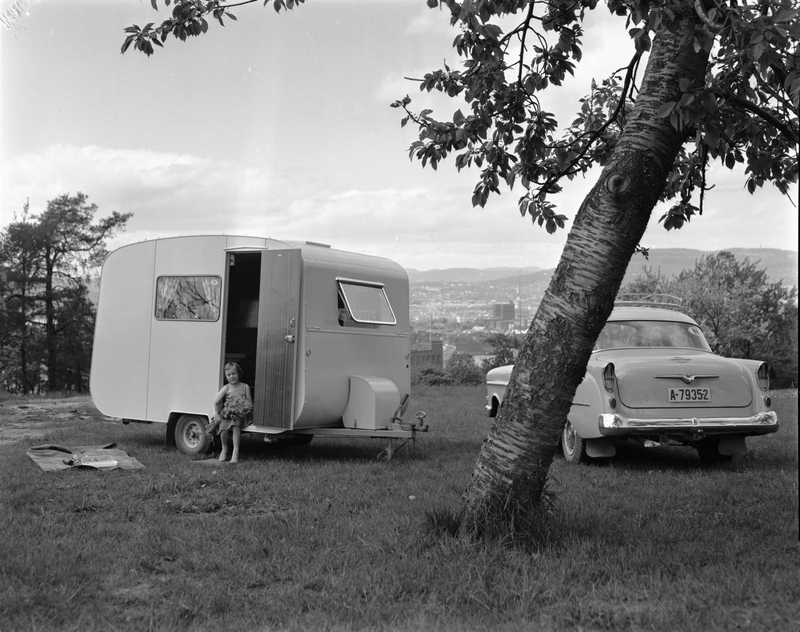This is the story of campsites in Norway, part 1. The series will concentrate on the development of campsites after WW2. Read my introduction and about the golden age of tent camping, the 1950s and 60s.
Introduction
Let me start with the conclusion: Campsites in Norway have been facing fierce competition from a number of reasons over the last fifty years, but they have continuously been adapting. Their features have changed considerably over the years and they have even succeeded in expanding their activity and popularity. This means that the era of campsites is far from over.
How I came to this conclusion will be discussed in five sections:
(1) The beginning, the classic period of tents in the 1950s and 60s.
(2) My camping experience from the 1960s and 70s.
(3) Growing competition from charter flights and good incomes in the 1970s and 80s. Caravans are starting to dominate.
(4) Decade of rapid transformation, the 1990s. Permanent sites for caravans, more cabins and caravans with high standards, tents out, enter the motorhomes.
(5) The last decade, recent developments and further reading.
Les artikkelserien om campingplasser på den norskpråklige delen av dette nettstedet.
Camping and the common right of access
Norwegians and foreign visitors have for centuries enjoyed a very tolerant and liberal common right of access. Everyone is free to roam, pitch their tent and stay the night on common land, i.e public land, the coastline, the beaches, nationally owned forests, mountains and open ground.
There are some restrictions but basically you may camp everywhere but in town house gardens or on cultivated fields in rural areas.

Tent near Hovlandsstølen, Stavtjørn
This kind of freeland camping is of a different kind, as the 1982-picture of my own tent illustrates. I will now concentrate on campsites in post-war Norway and reserve that other kind to a possible future article.
Methodical issues
The Wikipedia article on Campsite offers a fine introduction to the differing terms and types of camping in the English language world. Unfortunately there are differences between American and British English. The Norwegian term is “campingplass” meaning “campsite” or “campground” in English. I will be using the term “campsite” in the meaning of an area reserved for visitors pitching their tent or parking their caravan (travel trailer), campervan or motorhome on short stays or permanent basis but without moving in full-time.
In preparing this article I have built upon my personal experience growing up with camping holidays in the 1960s and 1970s. I have searched for books, articles and statistics from a wide variety of sources. Unfortunately there are few if any systematic analyses of the developments over the fifty year period I will be covering. I cite a number of sources but I cannot vouch for their reliability. Few of my sources are in English.
The official Norwegian census bureau, Statistics Norway, has had difficulties measuring the development of camping and campsites ever since the 1950s. There are no specified records of campsites until 1970. By the late 1980s they complained about poor and unreliable reports from the industry and there were no records of permanent caravan pitches until 1998.
Illustrations are from Digitalt museum released on a CC BY-SA 3.0 license; from named campsites; and my own photo archive.

Ekeberg camping (Oslo byarkiv). This picture is probably from around 1970 judging from the size of the caravans.
The early years – the classic period of tents in the 1950s and 60s
You are reading the story of campsites in Norway (part 1).
The first campsites opened around 1930 but reportedly in small numbers before WW2. Throughout the fifties there was rationing of cars in Norway, but at the turn of the new decade restrictions were lifted and a new form of vacationing developed, camping holidays.
Families went on camping trips everywhere in the country, and many also chose to cross the borders to Sweden and Denmark. As a result, campsites grew up like mushrooms. A large majority were situated next to the main roads on flat fields belonging to farms aiming at an extra income.
Eventually there was a legal regulation of them (1959), organisations grew up (e.g. Norsk Caravan Club (NCC) in 1960) and quality was standardised with one to five stars as the visible results.
By 1959 there were 400 campsites in Norway. They were in the beginning intended for families traveling with tents. Some of the guests came with caravans, but they were very few. According to the NCC only 300 caravans existed in the country in 1960. Family tents were usually large with a bedroom in the main tent, usually high enough to allow a grown person to stand inside it. There would also be an outside room, a foretent, where the family could cook, eat and stay.

Family Tent – (Oslo Museum 1964). This picture has it all: tent and foretent, foldable beds and chairs and inflatable swimming mattresses.
.
There were communal facilities in the camps with water supply, showers, and basins for dishwashing. Some places even had laundry facilities, and they all had centrally placed toilets. Many if not most campsites had kiosks, particularly popular with children, and some of the biggest also had their own grocery store with the most common items.
Here is a look to Denmark in the 1950s and the new form of vacationing: car, tent and caravan. Here is a link to an article on caravan history in Norway.

Ekeberg Camping – Car and caravan (Oslo Museum 1961). If the year is correct, this would be one of the first few hundred caravans in Norway.
.
There are few videos available on the web. This one is on YouTube. It was filmed in 1968 at Ørin Camping, a campsite in Trøndelag that had a short life from 1963 to 1973. The video may be characterised as a home video shot with a cine film camera, but it does give us a look back in time that can be fascinating to re(view).
I will now step aside a bit and recount my personal experience, before returning to the defining campsite trends since the 1960s.
Further reading
You have read the story of campsites in Norway (part 1). This is part of a longer article in five sections about campsites in Norway during the last 50 years.
(1) The beginning, the classic period of tents in the 1950s and 60s.
(2) My camping experience from the 1960s and 70s.
(3) Growing competition from charter flights and good incomes in the 1970s and 80s. Caravans are starting to dominate.
(4) Decade of rapid transformation, the 1990s. Permanent sites for caravans, more cabins and caravans with high standards, tents out, enter the motorhomes.
(5) The last decade, recent developments and further reading.
Les artikkelserien om campingplasser på den norskpråklige delen av dette nettstedet.


